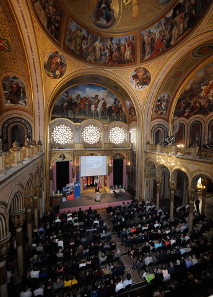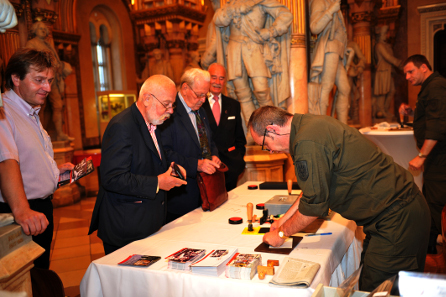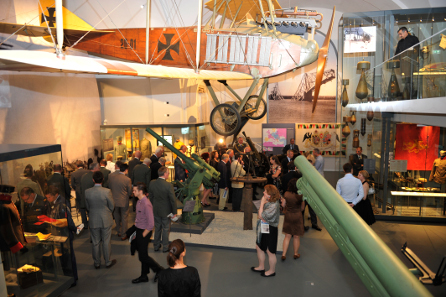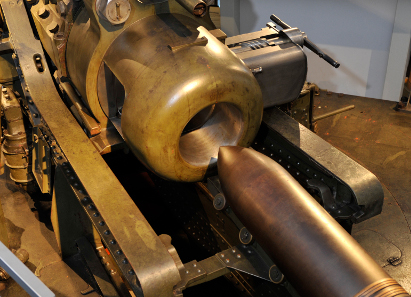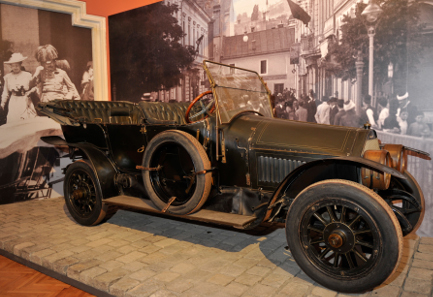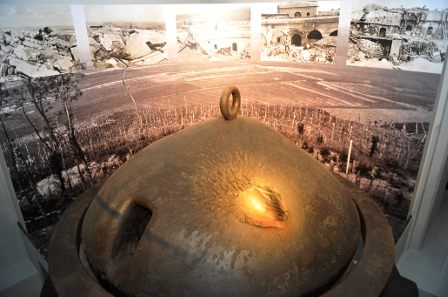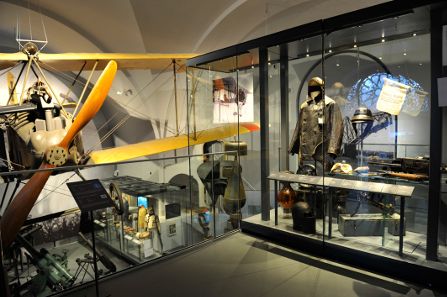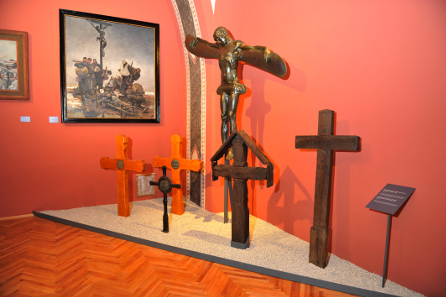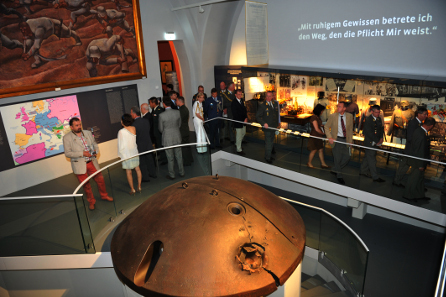July 24, 2014 – In 2014, 100 years have passed since the beginning of WWI. The Museum of Military History (HGM) in Vienna has taken that opportunity to renew the didactic and general concept of its WWI rooms.
The official inauguration. Photograph: HBF / Gunter Pusch.
On June 28, 2014, the anniversary of the assassination of Archduke Franz Ferdinand in Sarajevo, the new WWI room was officially inaugurated.
Photograph: HBF / Gunter Pusch.
So many people attended the inauguration that the museum was virtually filled to capacity.
The field post office was very well-frequented. Photograph: HGM / Manfred Litscher.
A field post office was specially established for the inauguration. The visitors could purchase special stamps and field postcards on the Archduke’s assassination and post them immediately.
View into the exhibition during the inauguration. Photograph: HGM / Manfred Litscher.
The display is not only arranged by chronological order but takes into account topical and geographical aspects as well as illustrated by the subject areas of ‘war fever and departure 1914’, ‘wounds and death’, ‘care and sorrow’, ‘women in the war’, ‘war propaganda’, and ‘remembrance of the war’.
Austrian 38cm howitzer M(uster) 1916. Photograph: HGM / Manfred Litscher.
Thanks to the very well supplied collection of the HGM the visitors can see many special objects linked to the assassination in Sarajevo like the automobile of the killed couple, a 38cm howitzer or an armoured cupola of the Przemysl Fortress.
But the museum also had the intention to show many newly acquired items.
Automobile of Sarajevo. Photograph: HGM / Manfred Litscher.
After leaving the room dedicated to the assassination in Sarajevo the visitors are offered an overview on the military and political situation in 1914.
Armoured cupola of the Przemysl Fortress. Its radius is 2.47m, its height 84cm. The original 8cm tank gun was removed. The cupola was built in 1894 by Skoda in Pilsen. The deformation on the cupola’s exterior was caused when it was hit by a Russian 28cm mortar shell. Photograph: HGM / Manfred Litscher.
The history of events of the northern war zone is illustrated by the cupola of the Austro-Ungarian Fortress of Przemysl and the following display cases.
Photograph: HGM / Manfred Litscher.
Next, aviation is given considerable space. Also the volunteers’ role is portrayed.
Photograph: HGM / Manfred Litscher.
Since the subjects of being wounded, death, and religion were omnipresent for the soldiers, the exhibition dedicates a special section to these aspects of war too.
Photograph: HGM / Manfred Litscher.
At the end of the tour the visitors can admire documents and objects related to the last war actions and, eventually, the armistice. The parts of this section, ‘invaldity’ and ‘remembrance’, are already referring to the effects of the war in the post-war period.
The Sarajevo room contrasts the assassination of the royals and the war it provoked costing around 9.5 million dead persons.
You can find many information on the exhibition and the museum on the HGM website.
In 2014 numerous exhibitions are dedicated to WWI, some of them particularly to numismatic aspects.
The Berlin Coin Cabinet shows medals …
… as well as the Linz museum, …
… and the British Museum investigates the relevance of medals for war propaganda.






